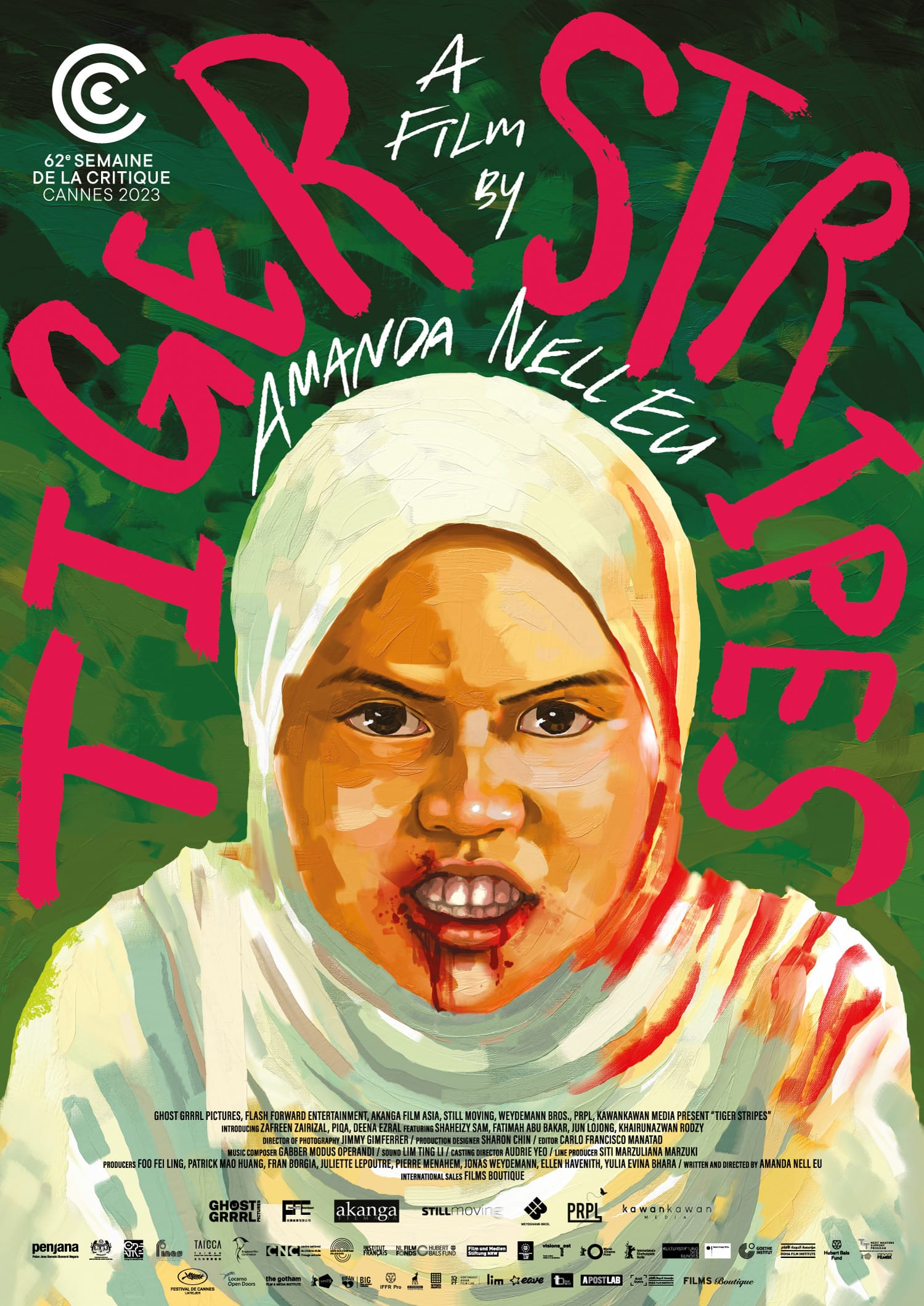Tiger Stripes, dir. Amanda Nell Eu
Zaffan's first menstrual period leads to more than pubertal changes: she begins to turn into something unexpected and inexplicable. Set in a rural Malaysian girls' school, Tiger Stripes follows Zaffan's mesmerising transformation from girl to creature, as hysteria takes over the school and the village.

A lot of the film unfolds in female toilets and the jungle. Early on these are safe spaces for Zaffan and her best friends Mariam and Farah to play, flail, and move their bodies. Places where men cannot enter, or unmapped places where humans might get lost. But once Zaffan has her period, she suffers violence from her mother and her classmates in those same (formerly) safe spaces.
Zaffan's mother shames her for both wearing too little (Zaffan returns home in just her camisole after playing in a stream) as well as wearing too much (she begins wearing gloves to hide her hands, which have mutated into sharp-clawed paws). Farah leverages her position as prefect to corral other girls into bullying Zaffan after the entire school learns she got her period (because she can't participate in daily Islamic prayers at school).
I daresay this is the first post-horror film out of South-east Asia. Writer-director Amanda Nell Eu demonstrates her even-handed mastery of genre demands without resorting to jump scares or overt body horror. (This is unsurprising: Eu's last two short films drew from Malaysian folklore.) The final monster reveal is kept to the end, while the sheer horror of female-on-female violence engendered by pubertal transformation is a constant. There are lingering shots of caterpillars that never turn into butterflies.
Eu also effortlessly blends other genres whilst subverting them: her coming-of-age high-schoolhas a potent, playful, and persistent adolescent female gaze, which (mediated thru Tiktok) bookends the film. There's dark comedy: a male bomoh (summoned by the school principal to talk to the girls about their periods, as well as by Zaffan's father to exorcise her demon) almost steals the show with his condescending cadence and overly histrionic mannerisms designed to burnish his influencer aspirations. (Here we must note that the cast, especially the trio of actors who play the teenage girls, are excellent, able to carry long shots of physical storytelling.)
The production values are tastefully strong. Wide angle shots of girls running and playing in the rainforest both heighten its alienness and accentuate its lushness. In particular, the sound design in this film left an impression: it is extensively used during Zaffan's transformation to convey her now-heightened senses, but also to undercut any grotesqueness of the inhuman form. When Zaffan transforms, there is snarling, swirling alien noise atop a pulsing electronic track with crystalline synths: beauty and horror in the same frame.
Above all, Tiger Stripes is deeply Malaysian and deeply feminist. Commentary on the majority's fatalistic worldview is weaved into a speculative tale about a rural Malay girl's teenage struggles. (It is deeply ironic that this film, Malaysia's official entry for the Oscar's Best International Picture, was censored in its Malaysian general release.) This is a remarkably assured and accomplished debut from Amanda Nell Eu, and I am excited to see what projects she will follow up with this.
Member discussion